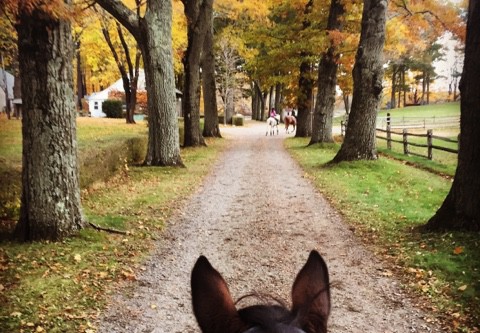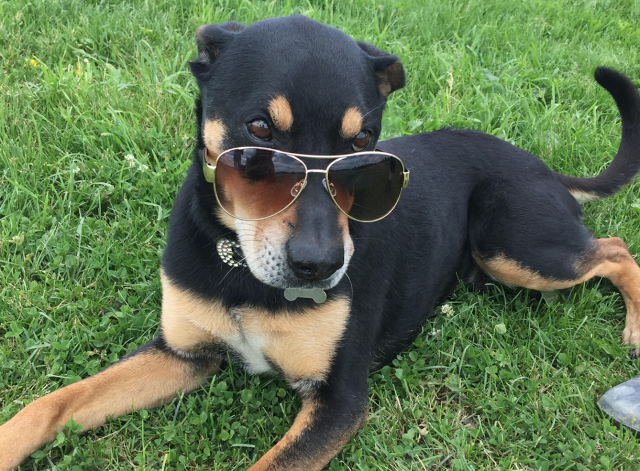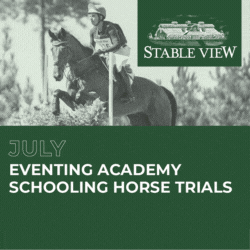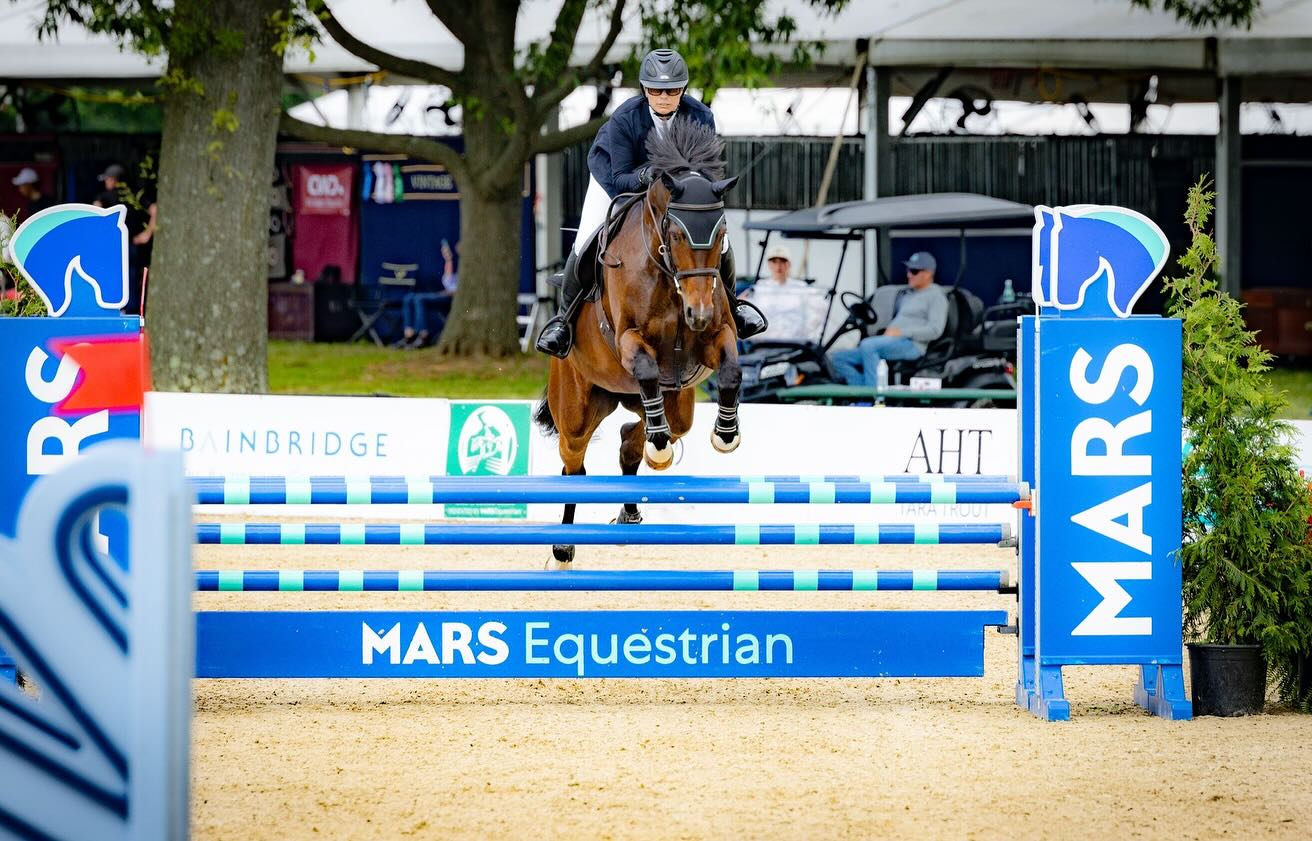This week’s edition of “What’s in Your Ring?” comes courtesy of Michael Willham, winner of the Hagyard Midsouth Long Format Prelim Three-Day in October. Michael and his 8-year-old Irish Sport Horse Fernhill Cayenne (A.K.A. “Cayenne” or “Cay”) led from start to finish and while they added 1.2 time penalties on endurance day, they were the only pair in the division to have a fault free show jumping round, locking in the win.
In addition to eventing, he is a senior at Otterbein University, majoring and minoring in all things business (management, administration, economics, finance, and marketing) and regularly contributes to EN as well! Thank you for taking time out of your busy schedule to share with us one of your favorite exercises, Michael.

Michael Willham and Fernhill Cayenne, winners of the Hagyard Midsouth Long Format Prelim 3-Day Event. Photo by Photography In Stride.
Eventing Nation contacted me to ask if I would contribute to their “What’s in Your Ring” series. Of course, I agreed, because I am always excited to pass on my knowledge to other people, even though I don’t claim to be an expert by any extreme stretch of the imagination. Perhaps that is part of the helpfulness though, I’m relatable: a mid-level eventer having some bumps along the road, trying to figure things out as I go, just like many other people.
You’re also in for a treat, because I wore my helmet cam so that you can get a rider’s eye view of how the exercise looks from horseback!
This exercise calls for only five poles, so set up and take down time is basically non-existent! However, you could keep adding on to it if you wanted to increase the difficulty!
Normally I only have a vague idea of what I want to accomplish when I put some pole exercises out. However, every week when I do pole-work, I include one thing time and time again: a 6 stride line.
Why you may ask? Well, at its foundation, I work on adjustability, which is perhaps one of the biggest challenges for many of us. I go through in the regular six strides, collect for 8, 9, sometimes 10 strides (my eventer is a little bit like a cruise ship, not the most adjustable – which is why we work on this!), and then lengthen and get it in 3 or 4 strides.
I set up the same 6 stride line each time in order to gauge each ride to the previous ones. Some weeks, like this video, we aren’t as adjustable. We only got down to 4 and up to 8 strides. Other weeks, we get down to 3 and up to 9 (and we’re almost at 10). It also changes depending on the saddle. Using a dressage saddle tends to add a stride, so we get down to 4 and up to 10.
It’s extremely important to know your horse though. Some horses are more adjustable than others; some horses are more adjustable one way and not so much the other. For example, my Prelim/1* horse eats distance for breakfast (without milk) and the 3 stride in a 6 stride is fairly easy for him. However we struggle to get past 9 strides in collection.
On the other hand, my retired novice-level eventer turned dressage horse struggles with lengthening, getting 4 strides on an extremely good day, but is TERRIFIC at collecting: we’re almost at 12 strides!
I also like setting up some sort of collecting, turning exercise. These are specifically for my eventer because, again, he sometimes turns like a cruise ship. I really like what I set up in this exercise. It is a set of 3 poles, set on a short 2 stride, 90 degree alternating bending line. The first pole turns right 90 degrees in a short 2 strides to the 2nd , which then turns left 90 degrees in 2 strides to the 3rd pole; basically creating an S shape. (I also threw in one of the straight line poles as a bending line just for something else to do, but it was 6-7 strides away).
This exercise can also be adjustable depending on the level, regular stride of the horse, and how difficult you want to make it. I set mine up on a short-ish 2 strides (I walk about 24 feet, with sharp 90 degree angles, with very skinny ground poles (they were about 3 feet wide, if I had to guess). This exercise really stresses the accuracy (you have to get in the middle, otherwise they’ll just miss the pole completely), collection (a short 2 stride), and turning (90 degree turns).
But you can obviously use longer poles, a little bit bigger distance between poles, and/or slightly less turning angles, especially when you’re first starting out.
*Warning* this exercise is harder than it seems! If it isn’t hard, then you’re either Phillip Dutton or you need to tweak it: shorten the distance/increase the angle/use skinnier poles/add more poles into the combination!
I also like where I set it up in the ring. I used already set up jumps in order to essentially make blind turns for him. I think this makes the exercise a more useful training tool, so that they have to be sure to listen to you, otherwise they’ll miss the turn!
I try to maintain a single lead throughout the “S” turn, since a flying change can lengthen their stride and throw off the turn. Maintaining the same lead is also good counter canter practice and helps you focus more on turning their shoulder: a very helpful tool for better jump rounds!
Again, I am not an expert by any means, so take this as advice from a fellow “amateur” competitor. (I’m not technically an amateur since I have a few sponsors, but I am in the sense that I only compete my one horse and I’ve only gone up to Prelim/1*). And remember, you can definitely do better than what I did in the 6 stride line! He was just not feeling the adjustability that day, so we only went from 4-8. I’d normally aim for at least 3-9 on Cayenne, while working towards 3-10.
Hopefully this helps someone out there! Give it a try the next time you do pole work! If you make it a routine, you should definitely start seeing some progress in adjustability! I know I did!
Thank you for sharing, Michael! Click here to read more of Michael’s EN submissions.
Do you have an exercise to share or is there an eventer you would like to nominate for the series? Email [email protected].
















































